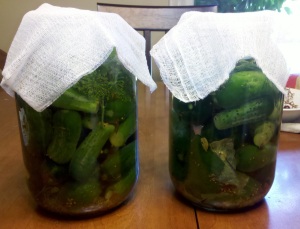Cocido or Cocido Madrileño or Cocido Rojo is known as a hearty stew or soup that has its origins in the Middle Ages. The history takes it through Spain and then on in to Mexico where it takes so many forms. It seems everyone their own recipe.
A friend of mine posted a picture of his Cocido and it looked so delicious, I looked it up. Most of the ingredients were in my kitchen, so I decided to make it right then.
I substituted a few things, added others, and left out the meat. Even in Mexico, there are vegetarians, so how would they do it? I wanted hearty flavors, so I used mushrooms, miso, and tamarind. (The tamarind was my husband’s idea…and it made it beautiful!)
I wanted the cilantro to top mine and he didn’t. I wanted mine plain or with corn tortillas and he wanted bean thread noodles. Turns out, this soup resembles Vietnamese soups or even BiBimBap. It is thrilling to see the similarities between the food in different cultures. It seems to me most of us are eating the same things with variations in the spices and accompaniments.
So here is my recipe for Cocido Vegetariano:
Vegetarian (Vegan) Cocido
Ingredients
- 2 quarts water
- 2 tbsp. Olive oil
- 2 tbsp. White miso paste
- 2 cups crimini mushrooms, sliced thickly
- ½ white or yellow onion, cut into wedges
- 3 garlic cloves, peeled and lightly crushed
- 2 large carrots, cut into chunks
- 1 large ear of corn, cut across the cob into 1 inch pieces
- 2 medium russet (or other) potatoes, cut into 1 inch chunks/Alternatively, cauliflower
- 1 cup chopped kale or other green
- 2-4 spicy peppers, sliced (I used small jalapenos) optional
- 2 summer squash cut into 1 inch slices (about 2-3 cups)
- 1/3 cup fresh cilantro leaves (to garnish and flavor after cooking)
- ¼ cup tamarind paste or chutney
- Salt added to taste
Instructions
- Add olive oil to large pot (4quart or larger). Use medium-high heat.
- Add chopped mushrooms when oil is hot and brown.
- When mushrooms are browning and starting to stick, add about 1 cup of the water to deglaze.
- Add the onion and garlic and stir. After a couple of minutes, add another cup of water.
- Add miso paste and stir to incorporate. (Alternatively, whisk into some of the water in a cup beforehand to break up the paste and then add to the pot)
- Add carrots, potato, corn, kale, and remainder of the water.
- Add salt to taste and the tamarind.
- Cook on medium heat (do not boil) for about 20-30 minutes.
- Add summer squash and cook for another 5-10 minutes or until tender.
- Serve with cilantro over top.
This serves well with bean thread or rice noodles, corn tortillas, or just by itself.
Serves 3-6
-Bon Apetit,
Guen
P.S. I have no pictures of this yet, but it is more of a very chunky vegetable soup as opposed to the giant chunks of meat, etc. you see in the links to other recipes.
